Table of Contents
With SaaS continuing to grow year over year, navigating which services to use and keeping track of the software your company currently uses can be an increasingly difficult task. All it takes for an employee to purchase SaaS is entering credit card information and clicking a button. With one in five employees buying SaaS, it can be difficult to know which apps are in use and even harder to know you are getting the right pricing and staying on top of renewals.
According to Zylo’s SaaS Management Index, the average organization’s IT department only manages around 16% of the applications in use. Without visibility into the other 84% of the company’s apps, this can lead to a few problems.
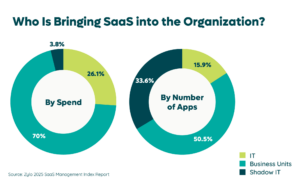
First, you’re unable to maximize the full value of your SaaS apps. That could mean money walking out the door and apps underutilized. Second, your employees will often rely on click-through license agreements. This is fast and easy but doesn’t allow for enterprise negotiation. Keeping licenses centralized is key if you are going to learn how to negotiate SaaS contracts.
This also leaks into renewal risks. No visibility means automatic renewals can continue to overcharge and you’re locked into a contract for a year or more. Up to 51% of SaaS licenses go unused in a typical 30-day period. Keeping an entire organization aware of the SaaS apps in use can save companies up to $18M on unused SaaS licenses. This is where SaaS management tools come in.
SaaS Management Tools Enable Contract Negotiations
SaaS management tools are a great way to compile data and keep track of renewal dates. Management tools can also help in preparations for enterprise contract negotiations. Going into negotiations with details like competitor pricing and benchmark data can help you get the most out of the applications you use.
If you know how to negotiate SaaS contracts, you know it works best when you have all of the details at your fingertips. It can help ensure that both parties get the most value out of the contract. In the end, SaaS contracts are partnerships. SaaS management tools are the key to making sure you have what you need to work with SaaS companies rather than against them.
How to Negotiate SaaS Contracts: 5 Best Practices
So, how are you supposed to go into SaaS contract negotiations? SaaS management tools can give you what you need, but they can’t negotiate for you. Here are five steps to take when going through negotiations to ensure that everyone involved comes away with a win.
#1 Preparation
Going into the conversation prepared is vital to any negotiation, this is especially true for SaaS contract negotiations. Understanding the terms and limitations of your current contracts is key to knowing what more you need from your SaaS apps.
Negotiation is only one aspect of SaaS contract management. Being well-versed in all components of contract management will result in more purchasing power in the end.
“When I go into a negotiation, I have an account executive on the other side who’s trying to achieve the same outcome I am, which is to get the best possible deal for everybody involved so we can all walk away happy.”
— Mousa Hamad, former VP of Corporate IT and Procurement at Pushpay
First, locate all of your organization’s contracts
This is often a tricky task. Very few companies have all of their contracts in a centralized location for easy access. More often than not, they might not even have complete, up-to-date contracts. This makes it difficult to identify what entitlements and limitations you may have in a contract.
Using SaaS Management tools like Zylo can make this process much less of a headache. Zylo can gather and organize inventory so you can easily access contracts and proactively prepare for SaaS renewals and negotiations.
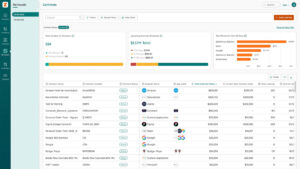
Second, know what elements of the contract you need to review
Before jumping into negotiation, understanding data access privileges and price protection post-expiration. These are two of the most important factors to keep in mind.
In addition, price increases and auto-renewal clauses can be big gotchas, according to procurement pro Dylan Margonari.
“Since I’ve been in [procurement], if 5% to 7% [increases] was common, now we’re seeing upwards of 15%, even higher than that, across the board, within the tech industry. It’s hamstringing a lot of our customers.”
— Dylan Margonari, Services Manager at Zylo
SaaS price caps can be an effective means to curbing steep increases and creating predictability in your budget. Protect your business by getting a price cap written into your contract.
If you don’t eliminate auto-renewal clauses from your contract, the vendor will continue to send you invoices. “Making sure that language is not in the agreement allows you to cancel applications when you need to cancel them,” explained Margonari.
It can also be helpful to understand the difference between click-through agreements and enterprise agreements. Click-through terms often heavily favor the vendor, while enterprise agreements benefit both parties more equally.
Last, gain visibility into software spending and usage data
SaaS discovery with tools like Zylo can be helpful in these situations as well. SaaS discovery looks into which applications are in use and how well they are being used. This can help just as much in negotiations as it can in eliminating unused software.
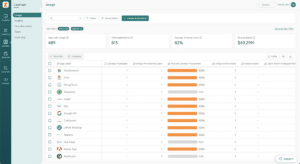
It’s also important to understand whether or not you are spending more than your peers on the same service. Zylo’s tools can give you a detailed insight on this matter for you to bring to the negotiating table.
This process is called “benchmarking.” SaaS benchmarking allows you to see how you compare to similar businesses in your industry in terms of cost for SaaS. Once you have benchmarks identified, you can leverage those in negotiations to ensure you’re not paying more for the same applications as your peers.
Zylo’s benchmarks can give you the detail you need to know exactly what you can and should be asking for.
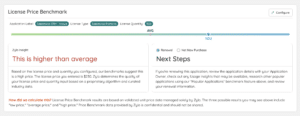
#2 Partner with Internal Stakeholders
As a purchaser of SaaS looking to know how to negotiate SaaS contracts, keep in mind your stakeholders and their needs. And include them in the process. It can help build trust and keep applications in use more regularly. Zero in on their genuine must-haves over the nice-to-have functions of the SaaS applications in question.
When the stakeholders get involved, it can clarify what the plan is for implementing the app. This will give the negotiator information on any plans for growth that could result in increased usage over time. It can also help in understanding the stakeholder’s willingness to concede certain features and can help the negotiator leverage everything from lower prices to multi-year terms.
Cutting stakeholders out of the process entirely can result in serious backlash. Going into a negotiation without knowing what the stakeholders need could make for longer negotiation times and unhappy stakeholders in the end. The more information you have as the negotiator, the better.
#3 Negotiation Isn’t All about Price
The last thing you want to do is cave on price negotiations for SaaS. But negotiation is about more than just price. It is about building relationships with the SaaS company. At the end of a negotiation, everyone should walk away with a win.
Gaining rapport with vendors can go a long way in the negotiation process. SaaS apps are almost always subscription-based, meaning you will likely have opportunities to renegotiate as you continue to use their product. Building a relationship during negotiations can help future negotiations and garner trust and good faith in the industry.
This doesn’t mean laying down and getting walked on by vendors. There is a line between going to bat for your stakeholders and being argumentative. If you can find a way to get what you need without crossing the line, you’ll likely find that you can leverage these relationships moving forward to continue shared success.
#4 Communicate the Path to Execution with the Vendor
When learning how to negotiate SaaS contracts, consider giving your vendor the information on how and why you need their product. This can help you expedite the negotiation process. Creating alignment in the process with clear goals and needs that are accurately expressed can make for a higher possibility of a win-win situation.
When you are transparent with what you need and why you need it, the vendor can return the favor by laying out limitations and potential workarounds. Filling them in on the process of getting a SaaS app approved can help them help you. This leads to amicable agreements and clearly defined expectations that don’t get misunderstood.
#5 Be Proactive with Renewals
Planning ahead with renewals allows you to be better prepared for renegotiations. Even if renegotiating isn’t on the board, being proactive will help keep costs down and eliminate your reliance on auto-renewals.
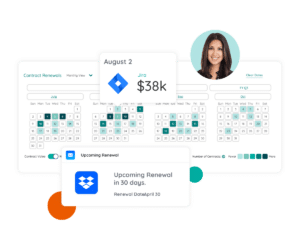
Preparing 90 days in advance will give you time to gauge how often the application is being used and give you the information necessary to plan out a renewal calendar. Having renewals planned out and accounted for can take the guesswork out of the process, thus giving you more vital information when negotiations come back around.
The Ultimate Guide for Wildly Effective SaaS Renewals
Learn MoreHow to Negotiate SaaS Contracts: Tactics to Leverage
After preparing your SaaS negotiation strategy, it is helpful to understand the tactics that work best in getting what you need out of the interaction. Here are some of the most effective methods to use when negotiating SaaS contracts.
Start the Conversation Early
As stated earlier, planning the negotiation process should start about 90 days in advance. Start the conversation early. This gives you the freedom to move at your own pace and puts pressure on the vendor to make the move.
It also gives you time to gather important information about the vendor. Sales reps will often have quotas to meet each quarter. Knowing which quarter and how far into the quarter you are can help you leverage a quicker sale that helps them meet their numbers. Oftentimes, to make the sale in time, they may offer discounted rates.
Longer Contracts Can Lead to Discounted Rates
Consider multi-year commitments as another way to work in some discounts. SaaS products often function in tiered models, meaning the more people expected to use the product can reduce the price per user.
If you have done your research and talked to your stakeholders about growth potential, you could find a way to move up tiers and get better pricing.
Being upfront about budget constraints can be another helpful tactic. Vendors will throw out pricing during negotiations. If they don’t meet your budget, you can guide the vendor to lower target prices or potential discounts so they can make the sale.
You can also leverage lower prices by providing references and case studies to the SaaS company that they can use to draw in new business. Remember, a partnership is the best way to get the best pricing. You win when everyone wins.
Understand What Your Peers are Paying
People who know how to negotiate SaaS contracts know that benchmarks are another key lever in negotiation. If you know your peers are paying less for the same product, say something. If a vendor won’t budge on pricing, having the benchmark research on your side can help loosen them up and offer the same discounts your peers are getting.
Know When to Ask for Help
With hundreds of renewals on your plate, we bet you’re not negotiating all of them. And it’s really not possible without the proper resources.
It’s keen to know when you’re in over your head and need support with negotiating your SaaS contracts. After all, every dollar counts, and preparing well for renewals can make a huge impact on OpEx reduction and your bottom line.
A software negotiations service can add support where you need it and move the needle.
For instance, at Zylo, our experts with procurement and SaaS negotiation experience are brought in to fully own your negotiations. They collaborate with internal stakeholders and drive the negotiation directly with the provider. They’re set up with contractor-level access and structure to support better collaboration and support internally with stakeholders, as well as engagement with providers.
Use Tools That Find the Data For You
Zylo’s SaaS management tool is the best way to get all of the information you need to negotiate effectively. With SaaS consulting and managed services that build and maintain internal business practices and systems of record for your SaaS solutions. Zylo can help create a yearly roadmap of optimization opportunities with instantly actionable insights. Schedule a demo with Zylo to see exactly why you need SaaS management, today!


 — Mousa Hamad, former VP of Corporate IT and Procurement at
— Mousa Hamad, former VP of Corporate IT and Procurement at